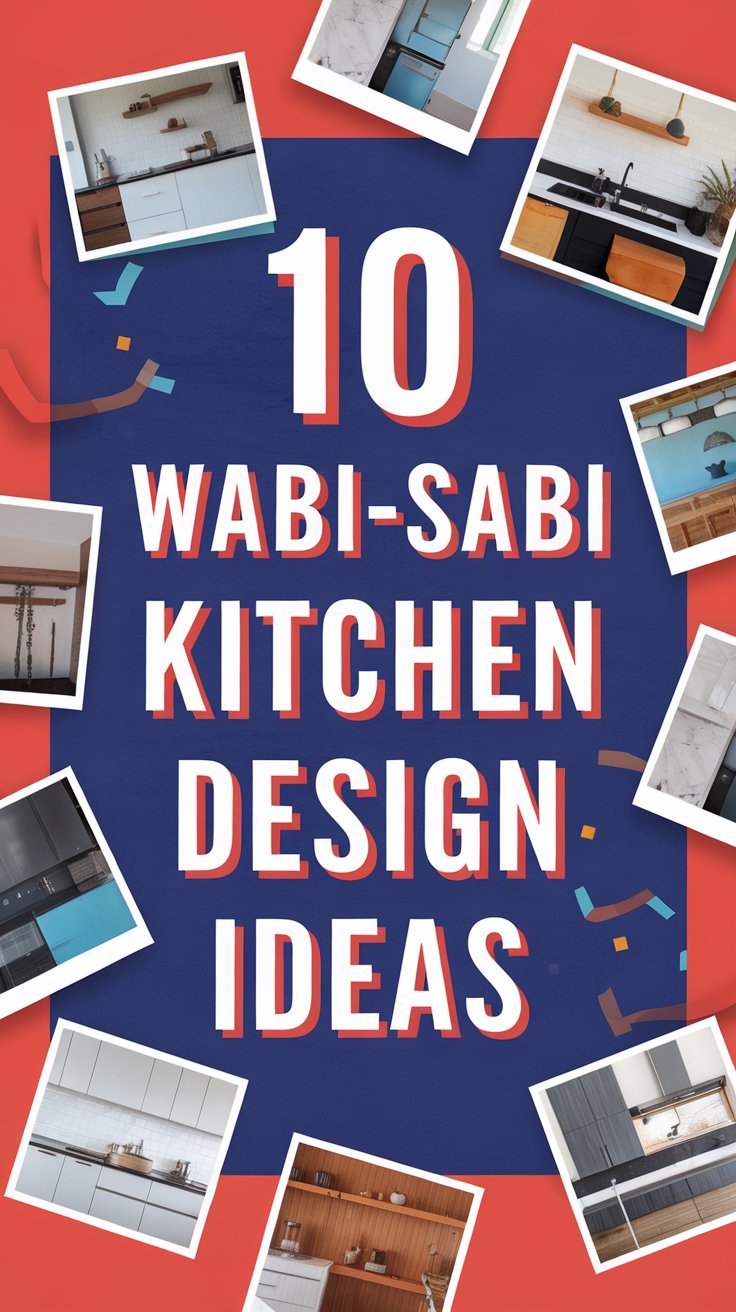10 Timeless Wabi-Sabi Kitchen Design Ideas for a Serene and Authentic Space
In a world that often prioritizes perfection, the Wabi-Sabi philosophy—rooted in Japanese aesthetics—invites us to embrace imperfection, natural beauty, and the passage of time. A Wabi-Sabi kitchen isn’t just a design trend; it’s a mindful approach to creating a space that feels warm, lived-in, and deeply connected to nature.
If you’re looking to infuse your kitchen with tranquility, authenticity, and understated elegance, these 10 Wabi-Sabi design ideas will help you craft a space that celebrates simplicity and imperfection in the most beautiful way.
- 1. Embrace Natural and Rustic Materials
- 2. Opt for a Subdued, Earthy Color Palette
- 3. Celebrate Handcrafted and Artisanal Elements
- 4. Let Time Tell Its Story: Embrace Wear and Tear
- 5. Keep It Minimal and Clutter-Free
- 6. Incorporate Open Shelving
- 7. Choose Soft, Tactile Textures
- 8. Connect with Nature Indoors
- 9. Use Warm, Layered Lighting
- 10. Personalize with Meaningful Objects
1. Embrace Natural and Rustic Materials
Wood, stone, bamboo, and clay are the cornerstones of a Wabi-Sabi kitchen. These materials age gracefully, developing a patina that tells a story over time. Opt for:
- Unfinished or lightly treated wood (oak, walnut, or ash) for cabinetry and countertops .
- Stone surfaces like granite or marble with visible veins and natural textures .
- Handmade ceramic or clay accents, such as pottery or tiles, to add organic charm .
Pro Tip: Choose sustainably sourced materials to align with Wabi-Sabi’s respect for nature .
2. Opt for a Subdued, Earthy Color Palette
Wabi-Sabi kitchens thrive on soft, muted tones inspired by nature—think warm whites, soft grays, earthy browns, and mossy greens. These hues create a Zen-like calmness while allowing natural textures to shine .
- Off-white or cream cabinetry paired with light wood accents keeps the space airy .
- Blackened steel or copper fixtures add subtle contrast without overpowering the serenity .
3. Celebrate Handcrafted and Artisanal Elements
Mass-produced perfection has no place in a Wabi-Sabi kitchen. Instead, incorporate:
- Hand-thrown pottery for dishes and storage .
- Woven baskets for organizing produce or utensils .
- Hand-carved wooden utensils that gain character with use .
Pro Tip: Mix and match handmade pieces—imperfections add soul to your space .
4. Let Time Tell Its Story: Embrace Wear and Tear
Unlike modern kitchens that strive for flawlessness, Wabi-Sabi celebrates aging. Consider:
- Copper sinks or accents that develop a natural patina .
- Reclaimed wood with visible knots and weathering .
- Concrete countertops that soften and stain over time, adding depth .
5. Keep It Minimal and Clutter-Free
Wabi-Sabi isn’t about chaos—it’s intentional simplicity. Achieve this with:
- Handle-less cabinetry for clean lines .
- Hidden storage solutions to maintain visual calm .
- Only essential items on display, avoiding unnecessary decor .
6. Incorporate Open Shelving
Open shelves allow you to display well-loved items while keeping the space functional. Use them for:
- Handmade ceramics .
- Wooden bowls and vintage glassware .
- Fresh herbs in simple clay pots .
7. Choose Soft, Tactile Textures
Texture adds warmth and depth. Introduce:
- Linen curtains or tea towels for a relaxed feel .
- Wool or jute rugs underfoot .
- Rough-hewn wooden stools for seating .
8. Connect with Nature Indoors
A Wabi-Sabi kitchen should feel alive. Bring in:
- Potted herbs or small trees .
- Fresh flowers in imperfect vases .
- A small indoor water feature for soothing sounds .
9. Use Warm, Layered Lighting
Harsh lighting clashes with Wabi-Sabi’s soft aesthetic. Instead, opt for:
- Rattan or paper pendant lights .
- Candlelight or dimmable fixtures for evening ambiance .
- Natural light enhanced by sheer curtains .
10. Personalize with Meaningful Objects
A Wabi-Sabi kitchen should reflect your story. Include:
- A cherished family heirloom, like a well-worn cutting board .
- A collection of handmade mugs from travels .
- A handwritten recipe framed on the wall .
Pro Tip: Less is more—curate with intention rather than filling every space .
Final Thoughts: Crafting a Kitchen with Soul
A Wabi-Sabi kitchen isn’t about following strict rules—it’s about creating a space that feels authentic, lived-in, and deeply comforting. By embracing natural materials, subdued colors, and handcrafted details, you can design a kitchen that celebrates the beauty of imperfection and the quiet joy of simplicity.

